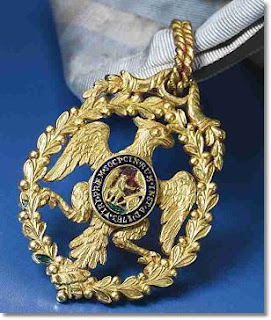As early as December 1781 the Assembly of Virginia had voted to commission a bust of Lafayette in Paris to be presented to him personally. Lafayette was sent a copy of the resolution and no doubt the idea appealed instantly to the vanity of the man. However, the project lay forgotten until September 1783 when Lafayette himself felt obliged to mention it in a letter to Washington.
Washington duly sprang into action. On 5th April 1784, Governor Harrison, with the approval of the Council, instructed Thomas Barclay, the American Consul at Nantes, to oversee to the commission. However the Assembly went back on its plan to present the statue to Lafayette personally, deciding instead to give it to the city of Paris, to be displayed "in some public place"; a second bust was commissioned for the Capitol at Richmond as the companion to a the projected statue of Washington.
Jefferson determined that Houdon should sculpt both the Washington and the Lafayette; Barclay was of the same opinion: "it is better that the same person compleat both the Busts; the more so as he is at the top of his profession". The cost of each was to be 3000 livres. Houdon took a life mask of Lafayette and made his preliminary model - now at Cornell - before sailing for Philadelphia in 1785 for his sittings with Washington. The first marble bust was completed in early 1786 and was installed, with much ceremony, in the great hall of the Hôtel de Ville in Paris. The second, in Richmond, was completed shortly afterwards. The Paris statue was damaged by order of the Commune on 10 August, as were busts of Louis XVI, Necker and Bailly; it is usually presumed to be the Lafayette salvaged by Houdon and mentioned in his posthumous studio sale: "Marble, voted in 1791 by the Commune of Paris, suffered in 1792 a mutilation which was repaired" - sold for 50 francs.

































